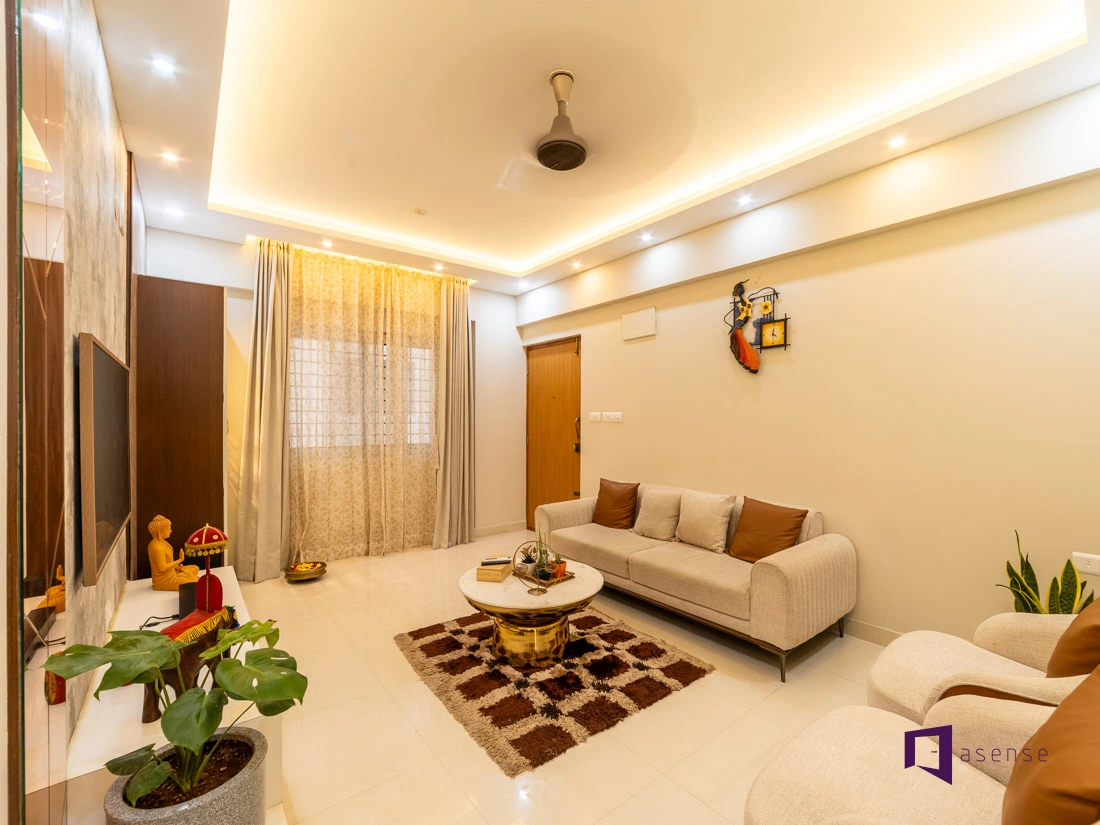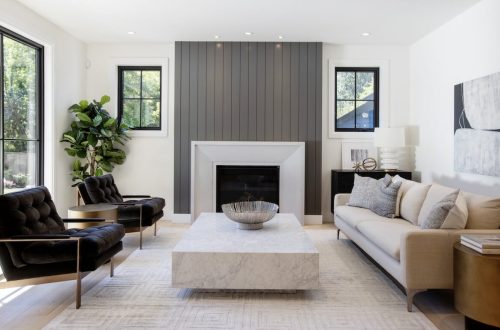A well-designed home is more than just aesthetically pleasing—it’s a reflection of your personality, a sanctuary for relaxation, and a functional space that supports your daily activities. Complete home interior design involves a systematic approach that transforms your living space into a cohesive, beautiful, and practical environment.
The process of designing your entire home can seem overwhelming, especially with the countless options available in today’s market. However, breaking it down into structured phases makes the task manageable and ensures that no important aspect is overlooked. Whether you’re designing a new home, renovating an existing space, or simply refreshing your current decor, this comprehensive guide will walk you through every step of the process.
In Jaipur’s diverse architectural landscape, from traditional havelis to modern apartments, the principles of good interior design remain consistent. This guide will help you create a home that not only looks beautiful but also functions efficiently for your specific lifestyle and needs.
Phase 1: Discovery and Planning
Finding Your Personal Style
Before diving into specific design choices, it’s essential to identify your personal style preferences:
- Mood Boards: Create visual collections of colors, textures, and styles that appeal to you. Use online tools or physical boards to gather inspiration.
- Lifestyle Assessment: Consider how you live, work, and entertain in your space. Your design should support these activities.
- Inspiration Sources: Explore design magazines, websites, social media, and showrooms to identify recurring themes that attract you.
- Existing Elements: Take inventory of furniture, art, or decor pieces you love and want to incorporate into the new design.
Pro Tip: Don’t feel constrained to one style. Many successful interiors blend elements from multiple design aesthetics to create a unique, personalized look.
In Jaipur’s culturally rich environment, you might find yourself drawn to traditional Rajasthani elements, contemporary minimalism, or a fusion of both. Understanding your preferences early in the process will guide all subsequent decisions.
Defining the Function of Each Room
Each room should serve a clear purpose that aligns with your lifestyle:
- Primary Functions: Identify the main purpose of each room (sleeping, cooking, entertaining, working, etc.).
- Secondary Functions: Consider additional uses (guest sleeping, exercise, hobbies, etc.).
- Traffic Patterns: Plan for movement through spaces to ensure ease of navigation.
- Privacy Considerations: Determine which activities require privacy and how to accommodate them.
Jaipur homes often have specific cultural considerations, such as spaces for family gatherings or areas for traditional activities. Incorporating these functional needs into your design plan ensures your home truly serves your family’s lifestyle.
Setting a Budget and Timeline
Realistic budgeting and scheduling are crucial for a successful project:
- Budget Categories: Allocate funds for furniture, flooring, paint, lighting, window treatments, and decor.
- Contingency Planning: Set aside 10-20% of your budget for unexpected expenses.
- Phased Approach: Consider completing the project in phases to spread costs over time.
- Timeline Realism: Account for lead times for custom pieces and potential delays.
Warning: Many homeowners underestimate both budget and timeline requirements. Research thoroughly and add buffer time and funds to your initial estimates.
In Jaipur’s market, custom furniture and traditional crafts may have longer lead times. Planning accordingly ensures your project stays on track without unnecessary stress.
Phase 2: Design and Selection
Creating a Floor Plan and Space Layout
Effective space planning maximizes functionality and flow:
- Measurement Accuracy: Take precise measurements of all rooms, including windows, doors, and architectural features.
- Furniture Placement: Plan furniture arrangement to optimize traffic flow and conversation areas.
- Scale and Proportion: Ensure furniture sizes are appropriate for each room’s dimensions.
- Focal Points: Identify and enhance natural focal points in each room (fireplaces, windows, architectural details).
Pro Tip: Use online room planning tools or graph paper to experiment with different layouts before committing to purchases.
In Jaipur’s diverse housing types, from traditional courtyard homes to modern high-rise apartments, thoughtful space planning is essential to create functional and beautiful interiors.
Choosing a Color Palette
Color sets the emotional tone for your entire home:
- Room-by-Room Consideration: Select colors that suit each room’s function (calming blues for bedrooms, energizing yellows for kitchens).
- Flow and Continuity: Ensure colors transition smoothly from room to room while maintaining individual character.
- Lighting Impact: Test colors in your actual lighting conditions, as they appear differently under various light sources.
- Personal Preference: Choose colors you love and will enjoy living with long-term.
Jaipur’s bright, natural light provides an excellent canvas for bold color choices, but it’s important to consider how colors will look throughout the day’s changing light conditions.
Selecting Furniture, Lighting, and Finishes
Each element contributes to the overall design concept:
- Furniture Selection: Choose pieces that are both functional and aesthetically pleasing, considering scale, style, and quality.
- Lighting Layers: Incorporate ambient, task, and accent lighting to create depth and functionality.
- Finishes Coordination: Select flooring, hardware, and fixtures that complement your overall design scheme.
- Texture Variety: Mix different textures (smooth, rough, soft, hard) to add visual interest.
In Jaipur’s design market, you have access to both traditional craftspeople and modern manufacturers, allowing you to create unique combinations that reflect your personal style.
Phase 3: Execution
Bringing the Plan to Life, Room by Room
Systematic execution ensures a cohesive result:
- Prioritization: Start with foundational elements (paint, flooring) before moving to furniture and decor.
- Quality Control: Inspect work at each stage to ensure it meets your standards before proceeding.
- Flexibility: Be prepared to make adjustments as you see how elements work together in reality.
- Professional Help: Know when to hire professionals for electrical work, plumbing, or complex installations.
Pro Tip: Document your progress with photos to track decisions and maintain consistency across rooms.
In Jaipur’s renovation projects, it’s often beneficial to work with local craftsmen who understand the region’s architectural nuances and can help execute traditional elements with modern functionality.
Project Management
Effective management keeps your project on track:
- Scheduling: Create a timeline that accounts for delivery times, installation requirements, and drying periods.
- Communication: Maintain clear communication with contractors, suppliers, and installers.
- Budget Tracking: Monitor expenses regularly to stay within your financial limits.
- Problem Solving: Address issues promptly to prevent delays and additional costs.
Special Considerations for Jaipur Homes
Climate Adaptations
Jaipur’s hot, dry climate affects material choices and design decisions:
- Heat Management: Choose light-colored fabrics and finishes that reflect rather than absorb heat.
- Dust Considerations: Select materials and finishes that are easy to clean and maintain.
- Sun Protection: Incorporate window treatments that block UV rays while maintaining aesthetics.
Cultural Integration
Incorporate elements that honor Jaipur’s rich cultural heritage:
- Traditional Crafts: Integrate local crafts like block printing, metalwork, or pottery into your design.
- Local Materials: Use locally sourced materials when possible for authenticity and sustainability.
- Cultural Functionality: Design spaces that accommodate traditional activities and gatherings.
Conclusion
Complete home interior design is a rewarding journey that transforms your living space into a reflection of your personality and lifestyle. By following a structured approach that includes discovery, planning, design selection, and execution, you can create a home that is both beautiful and functional.
The key to success lies in thorough preparation and understanding your specific needs, preferences, and constraints. Taking time to define your style, set realistic budgets, and plan systematically will save you time, money, and frustration in the long run.
In Jaipur’s unique environment, where traditional and modern elements coexist, you have the opportunity to create truly distinctive interiors that honor local culture while meeting contemporary living needs. Whether you choose to work with professionals or tackle the project yourself, the principles outlined in this guide will help you achieve beautiful, cohesive results.
Remember that great interior design is not about following trends or replicating magazine spreads—it’s about creating spaces that feel authentically you and support the way you live. Trust your instincts, be patient with the process, and enjoy the transformation of your home into the sanctuary you’ve always wanted.
Your perfectly designed home is an investment in your daily happiness and well-being. With careful planning and attention to detail, you can create spaces that bring joy every time you walk through your door.



